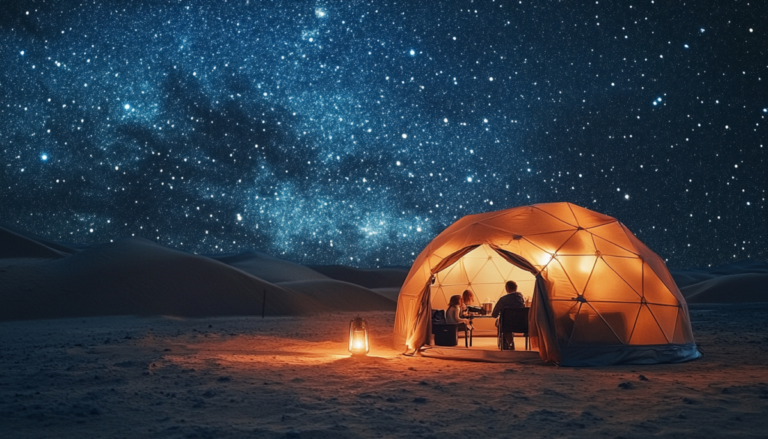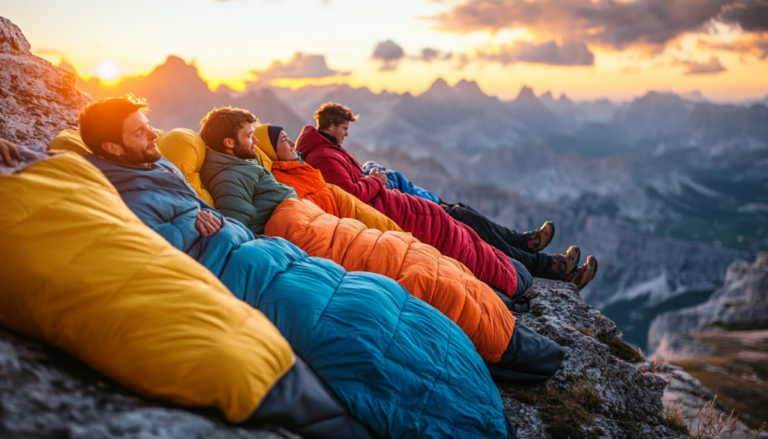Discover the Comfort and Convenience of High-Quality Sleeping Bags for Your Next Adventure
Are you planning an outdoor adventure? Whether it’s a camping trip, hiking expedition or backpacking journey, having the right gear is essential to ensure your comfort and safety. One piece of equipment that can make all the difference in your experience is a high-quality sleeping bag. In this article, we will explore everything you need to know about finding the perfect sleeping bag for your next adventure.
Introduction to High-Quality Sleeping Bags
Sleeping bags are designed to keep you warm and comfortable while you rest during your outdoor activities. They come in various shapes, sizes, materials, and insulation types, which makes choosing the right one crucial. A good quality sleeping bag should be lightweight, durable, and provide excellent thermal performance. It should also fit well and have a comfortable design that allows you to move freely inside.
Best sleeping bags for camping adventures
When it comes to selecting the best sleeping bag for camping trips, there are several factors to consider. Firstly, think about where you will be camping and what weather conditions you might encounter. If you plan on camping in colder climates, then a heavier, warmer sleeping bag would be more suitable. On the other hand, if you’re heading to a warmer climate, a lighter weight, less insulated bag may be better suited.
Secondly, consider the type of camping you will be doing. For example, if you plan on car camping, you can bring a larger, bulkier sleeping bag, whereas if you’re going backpacking, you’ll want something smaller and more compact. Thirdly, consider the shape and size of the sleeping bag. Some sleeping bags are mummy-shaped, which means they have a tapered shape that helps retain heat, while others are rectangular, providing more room to move around.
Sleeping bag reviews and buying guide
With so many different options available, choosing the right sleeping bag can feel overwhelming. To help simplify the process, here are some key features to look for when shopping for a new sleeping bag:

1. Insulation – The most common types of insulation used in sleeping bags are down feathers, synthetic fibers, and wool. Down feather insulation is highly recommended as it provides exceptional warmth-to-weight ratio, but it tends to be expensive. Synthetic fiber insulation is cheaper and performs well even when wet, making it ideal for damp environments. Wool insulation is breathable, moisture-wicking, and naturally odor-resistant.
2. Fill power – This refers to the loftiness of the insulation and how much space it takes up. A higher fill power indicates higher quality insulation that traps more air and provides better warmth.
3. Shell fabric – The shell fabric should be durable, waterproof, and breathable to prevent moisture from getting into the sleeping bag.
4. Lining – The lining should be soft, comfortable, and ideally made from silky fabrics like nylon or polyester.
5. Zippers – Make sure the zipper is easy to use and has a protective flap to prevent snagging.
Warm and lightweight sleeping bags for outdoor camping
If you’re looking for a warm and lightweight sleeping bag for your outdoor adventures, then consider the following options:
1. Down Feather Sleeping Bag – These sleeping bags are highly recommended due to their superior warmth-to-weight ratio, compressibility, and long-lasting durability. However, they tend to be expensive.
2. Synthetic Fiber Sleeping Bag – These sleeping bags are affordable, lightweight, and perform well even when wet. They are ideal for casual campers who don’t require extreme cold-weather performance.

3. Wool Sleeping Bag – These sleeping bags are natural, sustainable, and offer great warmth without adding too much weight. They are also highly breathable, moisture-wicking, and resistant to odors.
How to choose the right sleeping bag for your needs
Choosing the right sleeping bag requires careful consideration of several factors such as temperature rating, insulation type, weight, packed size, and price range. Here are some tips to help you select the right sleeping bag for your specific needs:
1. Determine the intended use – Consider where and when you will be using the sleeping bag, and what kind of environment you will be in. This will help you determine the appropriate temperature rating and insulation type.
2. Choose the correct temperature rating – Sleeping bags are rated by their minimum temperature limit, usually between 0°F to 50°F. Choose a bag with a lower temperature rating than the expected low temperature at your campsite.
3. Decide on the insulation type – Down feathers, synthetic fibers, and wool are the three main types of insulation used in sleeping bags. Each type has its advantages and disadvantages depending on your preferences and budget.
4. Evaluate the weight and packed size – If you’re carrying your gear on a long hike, then opt for a lightweight and compact sleeping bag. However, if you’re driving to your campsite, then you can go for a slightly heavier and bulkier option.
5. Set a budget – Sleeping bags vary widely in price depending on the brand, material, and features. Establish a budget beforehand to avoid overspending.
Conclusion: Discover the Comfort and Convenience of High-Quality Sleeping Bags
Investing in a high-quality sleeping bag is an investment in your comfort and safety during your outdoor adventures. By considering the above factors, you can find the perfect sleeping bag that meets your specific needs and ensures a restful night’s sleep. So, whether you’re planning a weekend getaway or an extended backcountry trip, discover the comfort and convenience of high-quality sleeping bags and enjoy the great outdoors!

